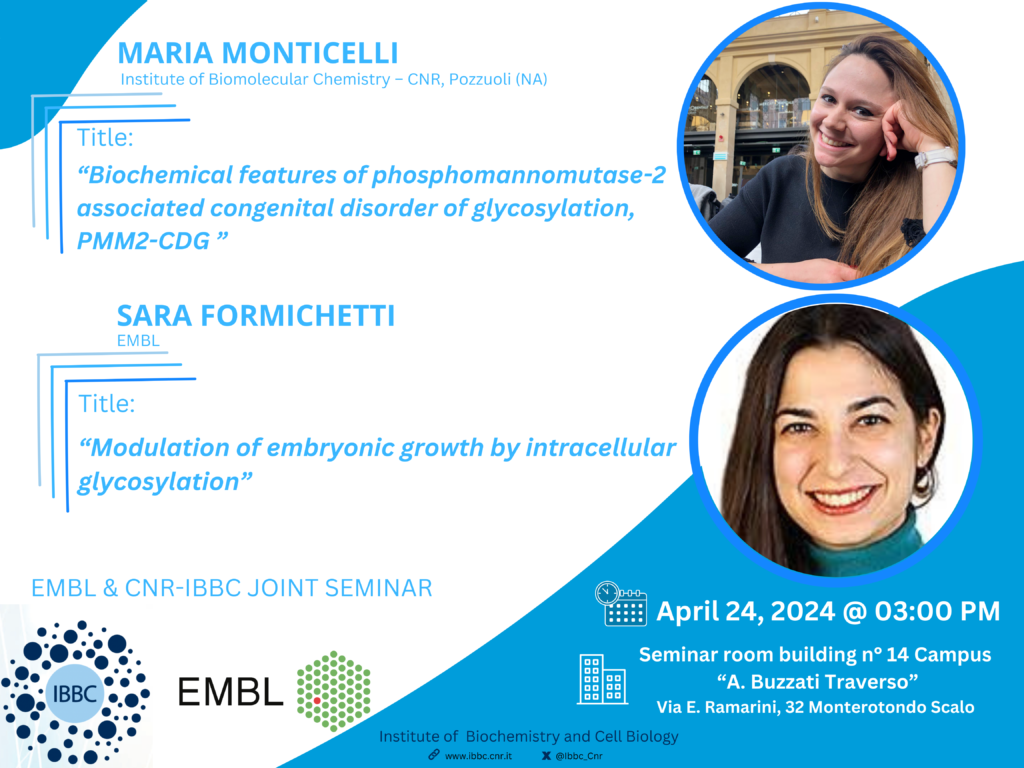Biochemical features of phosphomannomutase-2 associated congenital disorder of glycosylation, PMM2-CDG
- Speaker: Maria Monticelli
Institute of Biomolecular Chemistry – CNR, Pozzuoli (NA
- Title: Biochemical features of phosphomannomutase-2 associated congenital disorder of glycosylation, PMM2-CDG
- Researcher Host: Fulvio Saccoccia
Abstract:
The biochemical characteristics of phosphomannomutase-2, which is associated with the congenital disorder of glycosylation (PMM2-CDG), are of great interest. PMM2 deficiency stands out as the most prevalent among congenital disorders of glycosylation, also referred to as Jaeken disease or PMM2-CDG. A broad phenotypic spectrum characterizes this disorder, notably impacting the central nervous system. The underlying cause of PMM2-CDG can be attributed to mutations in the PMM2 gene, which is responsible for encoding the enzyme phosphomannomutase-2. This phosphomannomutase enzyme plays a crucial role in the inter-conversion of mannose-6-phosphate (Man-6-P) and mannose-1-phosphate (Man-1-P). Notably, Man-1-P serves as the precursor to GDP-mannose, a molecule essential for the biosynthesis of Man5GlcNAc2-PP-dolichol. Activation of PMM2 requires a bisphosphate sugar, specifically glucose-1,6-bisphosphate (Glc-1,6-P). In humans, phosphomannomutase-2 has a paralogous counterpart known as phosphomannomutase-1 (PMM1), with a shared identity of 63%. This similarity arises from a duplication event that occurred early in vertebrate evolution. Both enzymes exhibit phosphomannomutase activity, although PMM1 also demonstrates phosphatase activity towards bisphosphate sugars. Considering these details and the inability of wt-PMM1 to compensate in PMM2-CDG patients, a hypothesis has emerged suggesting that PMM1 might counterbalance the reduced PMM2 activity by hydrolyzing its bisphosphate activators. Our research efforts are dedicated to the biochemical elucidation of PMM2 mutants, focusing on delineating the distinctions between the paralogous enzymes and exploring novel small molecules as potential therapeut.


